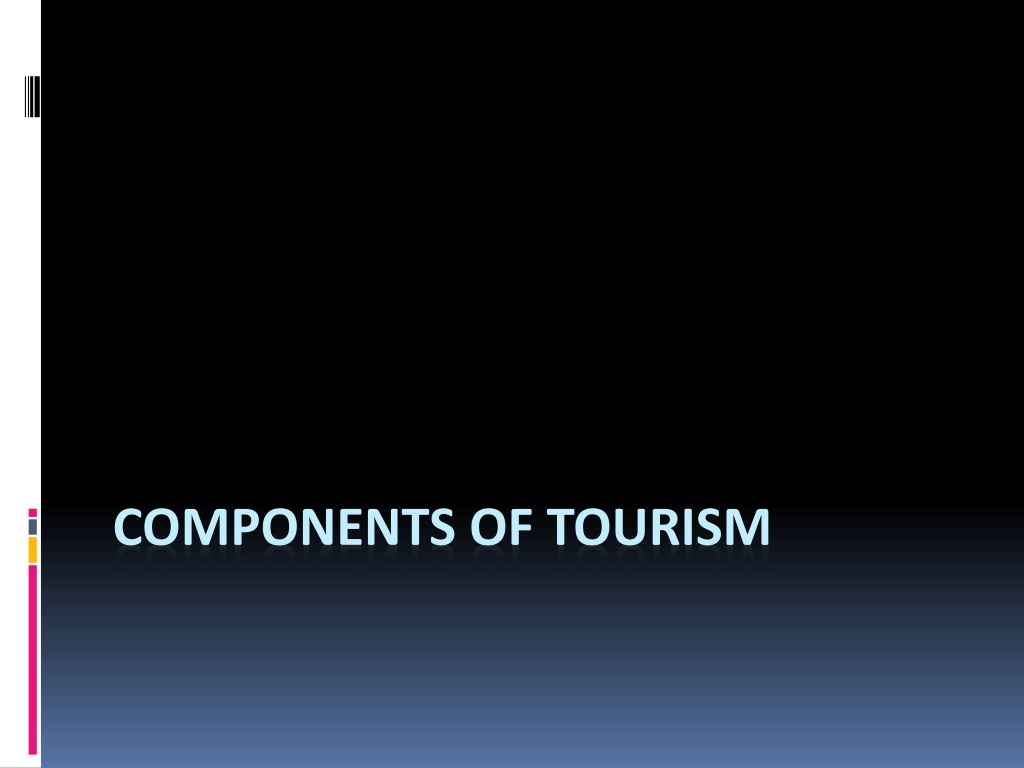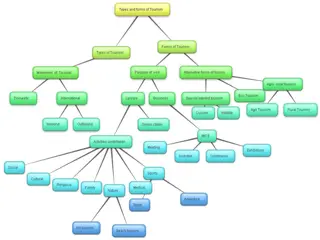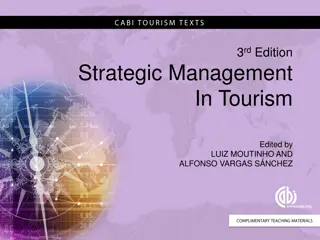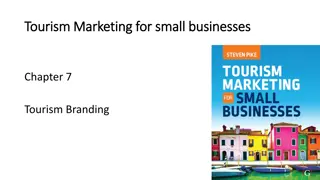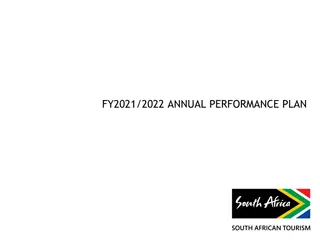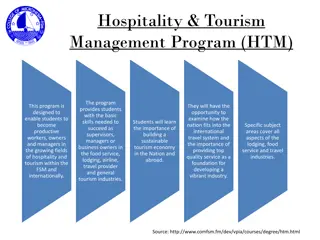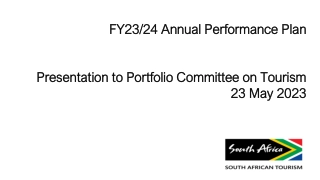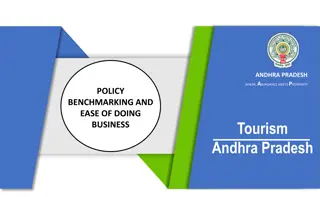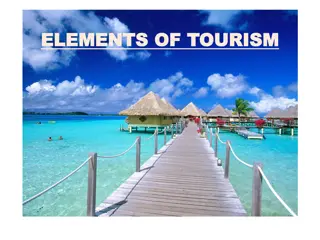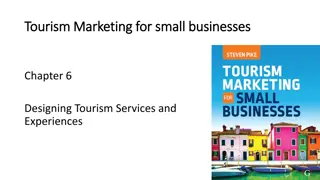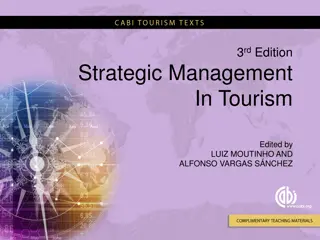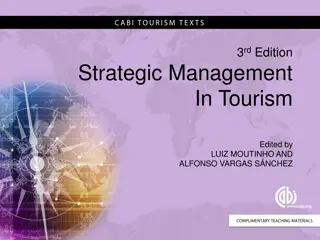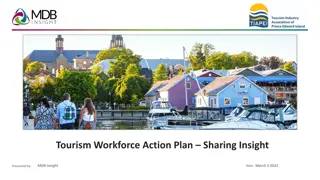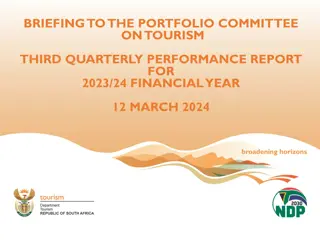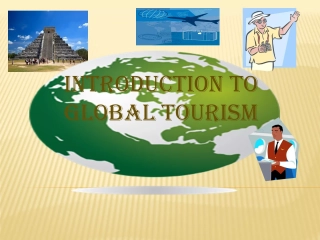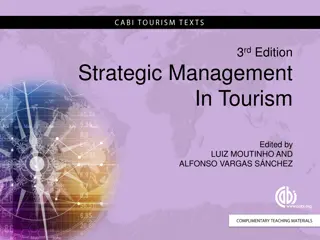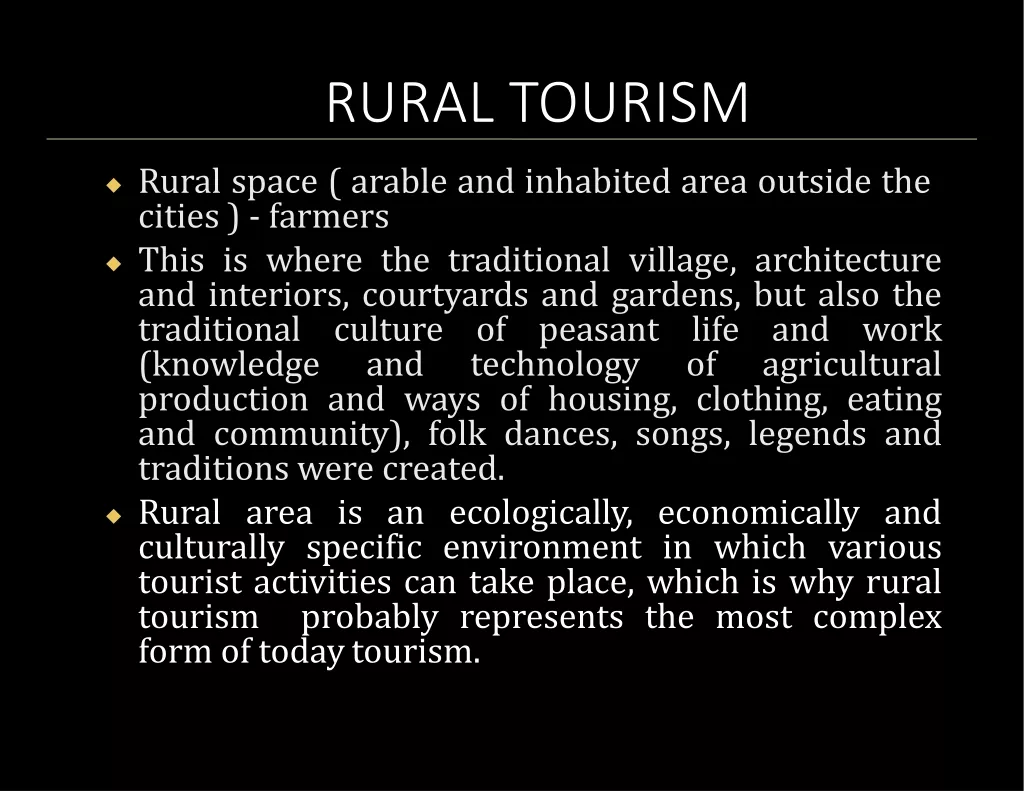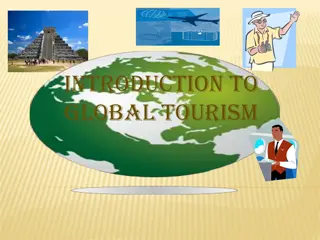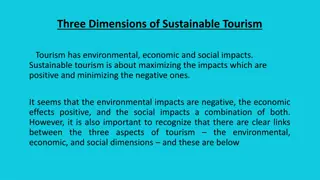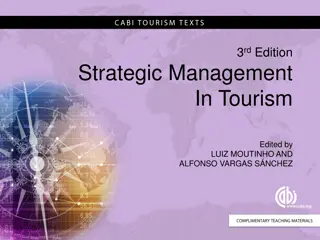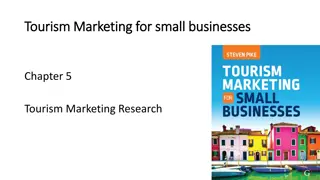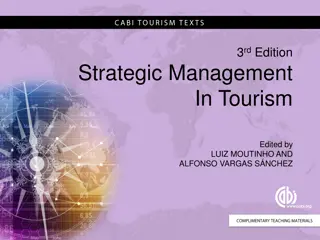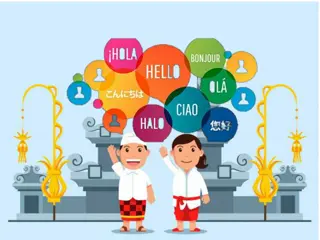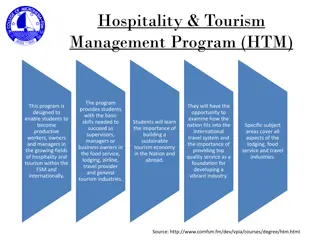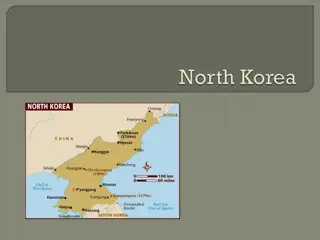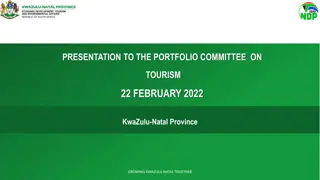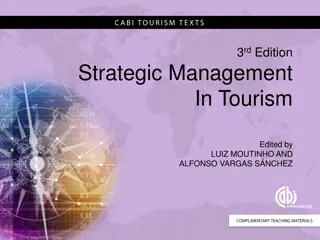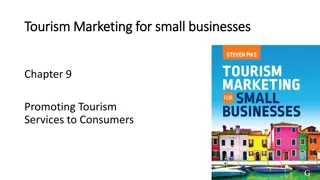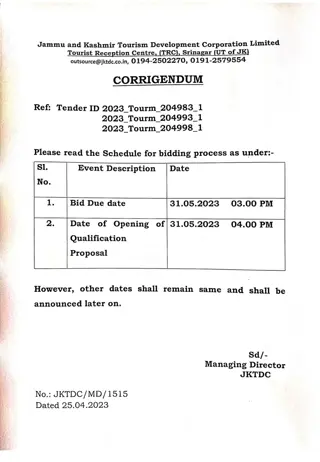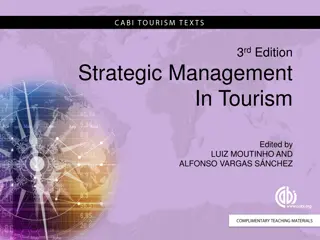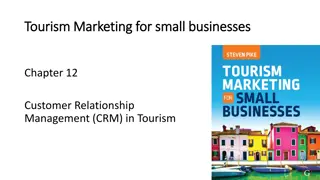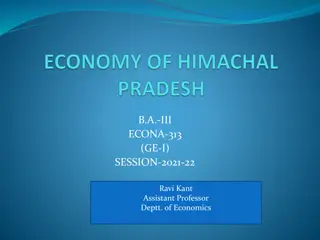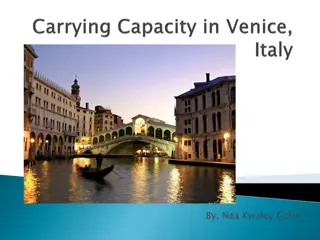Understanding the Components of Tourism for Destination Success
Tourism involves activities of individuals traveling outside their usual environment for leisure, business, or other purposes. The success of tourist destinations relies on Accessibility, Accommodation, Attractions, Amenities, and Activities. Accessibility ensures reachability to destinations via various modes of transportation. Water travel, rail travel, motor coach, and air transport play crucial roles in tourism. Accommodation provides shelter and food options for tourists, ranging from luxury hotels to budget accommodations. Developing a suitable combination of these components is key to effective tourism planning.
Download Presentation

Please find below an Image/Link to download the presentation.
The content on the website is provided AS IS for your information and personal use only. It may not be sold, licensed, or shared on other websites without obtaining consent from the author. Download presentation by click this link. If you encounter any issues during the download, it is possible that the publisher has removed the file from their server.
E N D
Presentation Transcript
Definition of tourism Tourism comprise the activities of persons traveling to staying in places out side their usual environment for not more than one consecutive year for the purpose of leisure, business and other purposes.
Components of Tourism (5 As of tourism) The interrelationship of the following five A factors: success of a tourist destination depends upon the Accessibility Accommodation Attractions Amenities Activities Developing a suitable combination of these factors is at the heart of tourism planning.
Accessibility If the tourist attractions are located at places where no transport can reach or where there are inadequate transport facilities, these become of little value. Accessibility means reachability to the place of destination through various means of transportation. The different modes of transportations are rail, road, air and water Transportationshould be regular, comfortable, economicaland safe. Sometimes modes of transport can be attractions in their own right. Ferries, steam trains and scenic roads with viewing areas both provide access and can be attractions in themselves
Water Travel The Duke of Bridgewater is believed to be the initiator of water transport service between Manchester and London Bridge in 1772. These are market boats and used to pick up passengers as well as goods on ship canals in England. By 1815, steamship emerged and gradually steamship excursions on Themes became so popular. Now, the popular modes of water transportation include, 1) Cruises (Ocean and River), Safari boats, House boats etc. Rail Travel Indian Railways is the third largest rail network in the world, and the rail system is efficient, if not always on schedule. Indian Railways operate a number of luxury trains for the purpose of tourists who are interested to explore Indian destinations. These are operated by different state tourism development corporations in collaboration with the Indian railways. The major tourist trains include: Palace on Wheels, Deccan Odyssey, Golden Chariot, Maharaja s Express, Royal Rajasthan on Wheels etc. Motor coach Now, the most popular way of transport is being used widely by the public for travel and holidaying due to its special significance to the mankind. Air Transport The introduction of Boeing and Jet series of aircrafts democratized and popularized the air travel among the general public as well. The speed and efficiency of aircrafts facilitated the travelers to cover distant lands in short period. Air travel in the world is growing at speed of 5% yearly. Liberalization and privatization policies in air transport given an abundant opportunity for so many private carriers to enter to the market.
Accommodation It is a place where tourists can find food and shelter provided he/she is in a fit position to pay for it. There are various types of accommodation from a seven star deluxe hotel to a normal budget class hotel. A variety in style and quality of accommodation in a region provides an important means to increase the economic impact of visitors. Normally accommodation is classified into two Primary accommodation Secondary accommodation
Primary accommodation It is the place where travellers can get accommodation as well as all other facilities. Example : Hotel, Resort, Heritage hotels
Which provide accommodation Secondary accommodation/ Supplementary accommodation. but not the services of Hotel Example: Motels, Holiday centre, Forest lodges, Dharmasalas, Youth hostels etc
Attractions Attraction are the reason for visit to any place. It is a place of interest where tourists visit, typically for its exhibited cultural value, historical significance, natural or built beauty, or amusement opportunities. The other constituents of the tourism industry such as accommodation, transport, food and beverage, etc. depend on the existence of attractions at the destination for their survival.
Types of attractions These attractions are completely natural and include mountains, rivers, lakes, beaches, deserts which has not been made by man. Natural attractions national and parks, anything Manmade attractions These are products of history and culture . Types of manmade include museums, statues, castles shopping and theatres and sporting venues. attractions galleries, buildings, centres, and leisure
The attractions are again classified into two. They are : Site attraction Alps, mountain, Himalayas, water falls at Niagara Camel festival, boat festival at Kerala etc Event attraction
Peters inventory of tourism attractions are: As interests and tastes vary from man to man, the tourists might make the selection out of the wide range of attractions available at various tourist spots all over the world. Peters has drawn up an inventory of the various attractions which are significance in tourism. They are: Cultural It is the ideas, customs and social behaviour of a particular social group. Example: Sites and areas of archaeological interest, historical buildings and monuments, museums, religious institutions etc. Traditions It is the transmission of customs and belief of one generation to another. Example: National festivals, arts and handicraft , music, folklore, life and customs. Scenic National parks, wildlife, flora and fauna, beach resorts, mountain resorts. Entertainment 1. 2. 3. 4. Participation and viewing sports, museum and recreation parks, cinemas and theatre, zoos and aquariums, cusine, nightlife etc
Amenities Basic facilities provided in a tourist destination . Amenities are the services that are required to meet the needs of tourists during their visit to a destination. Retail Shops Restaurants and Caf s Public toilet Public transport Tourist information desk Telecommunications, Emergency services Drinking water
Activities The various element of tourism services available which offer to tourist at the destination. Activities provide entertaining diversions for people once they are in the area. Activities add variety and can make a visit more enjoyable. Trekking Bird watching Sailing Sports Traditional music/ dance performance
